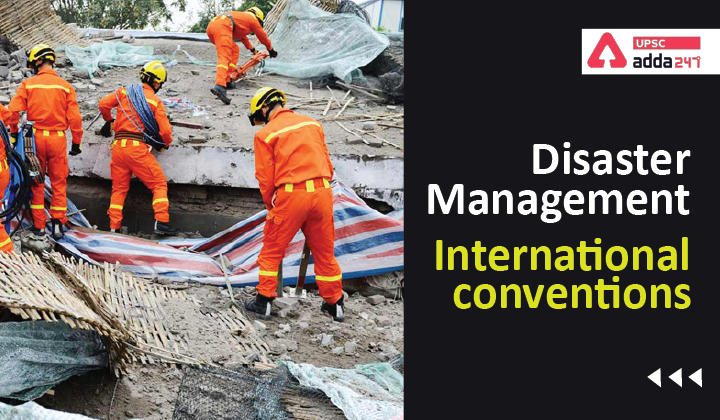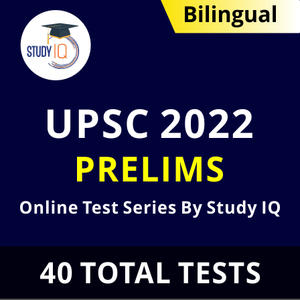Table of Contents
United Nations Disaster Risk Reduction
In the previous article, we have discussed the basics of disaster management. In this article, we will discuss about the international efforts regarding disaster management.
International measures of disaster management are majorly drives by the United Nations Disaster Risk Reduction (UNDRR).
United Nations Disaster Risk Reduction
- UNDRR (formerly UNISDR) is the United Nations focal point for disaster risk reduction.
- As the United Nations Office for Disaster Risk Reduction, UNDRR brings governments, partners and communities together to reduce disaster risk and losses to ensure a safer, more sustainable future.
- The World Conference on Disaster Risk Reduction is a series of United Nations conferences focusing on disaster and climate risk management in the context of sustainable development.
- The Conference has been convened three times till date, and each edition was hosted by Japan.
UNDRR: 3 editions
- Yokohama in 1994
- Hyogo in 2005
- Sendai in 2015
Yokohama Strategy for a Safer World
It was adopted in 1994. It provides 10 strategic principles which are stated below:
- Risk assessment is a required step for the adoption of adequate and successful disaster reduction policies and measures.
- Disaster prevention and preparedness are of primary importance in reducing the need for disaster relief.
- Disaster prevention and preparedness should be considered integral aspects of development policy and planning at national, regional, bilateral, multilateral and international levels.
- The development and strengthening of capacities to prevent, reduce and mitigate disasters is a top priority area to be addressed during the Decade so as to provide a strong basis for follow-up activities to the Decade.
- Early warnings of impending disasters and their effective dissemination using telecommunications, including broadcast services, are key factors to successful disaster prevention and preparedness.
- Preventive measures are most effective when they involve participation at all levels, from the local community through the national government to the regional and international level.
- Vulnerability can be reduced by the application of proper design and patterns of development focused on target groups, by appropriate education and training of the whole community.
- The international community accepts the need to share the necessary technology to prevent, reduce and mitigate disaster; this should be made freely available and in a timely manner as an integral part of technical cooperation.
- Environmental protection as a component of sustainable development consistent with poverty alleviation is imperative in the prevention and mitigation of natural disasters.
- Each country bears the primary responsibility for protecting its people, infrastructure, and other national assets from the impact of natural disasters.
2nd UNDRR: Hyogo Framework for Action
- The Second World Conference on Disaster Reduction conference was held in Kobe, Hyogo.
- The conference was held after 10 years to the day after the Great Hanshin earthquake in Kobe and less than a month after the 2004 Indian Ocean tsunami.
- The upcoming conference had not garnered much attention, but due to the Indian Ocean tsunami, the attendance grew dramatically and the international media focused on the event.
- The conference led to the adoption of Hyogo framework of action which had 5 specific priorities discussed below:
Hyogo Framework for Action: 5 priorities
- Making disaster risk reduction a priority;
- Improving risk information and early warning;
- Building a culture of safety and resilience;
- Reducing the risks in key sectors;
- Strengthening preparedness for response.
3rd UNDRR: Sendai framework
- The Third UN United Nations World Conference on Disaster Risk Reduction was held in Sendai.
- The conference adopted the Sendai Framework for Disaster Risk Reduction 2015–2030.
- The Sendai Framework is the first major agreement of the post-2015 development agenda, with seven targets and four priorities for action.
- It was endorsed by the UN General Assembly in June 2015.
Sendai Framework for Disaster Risk Reduction 2015–2030
Sendai Framework: 4 Priorities
- Understanding disaster risk;
- Strengthening disaster risk governance to manage disaster risk;
- Investing in disaster reduction for resilience and;
- Enhancing disaster preparedness for effective response, and to “Build Back Better” in recovery, rehabilitation and reconstruction.
Sendai framework: 7 targets
- 2016 – Target (a):Substantially reduce global disaster mortality by 2030, aiming to lower the average per 100,000 global mortality rate in the decade 2020-2030 compared to the period 2005-2015;
- 2017 – Target (b): Substantially reduce the number of people affected globally by 2030, aiming to lower the average global figure per 100,000 in the decade 2020-2030 compared to the period 2005- 2015;
- 2018 – Target (c): Reduce direct disaster economic loss in relation to global gross domestic product (GDP) by 2030;
- 2019 – Target (d):Substantially reduce disaster damage to critical infrastructure and disruption of basic services, among them health and educational facilities, including through developing their resilience by 2030;
- 2020 – Target (e):Substantially increase the number of countries with national and local disaster risk reduction strategies by 2020;
- 2021 – Target (f):Substantially enhance international cooperation to developing countries through adequate and sustainable support to complement their national actions for implementation of the present Framework by 2030;
- 2022 – Target (g):Substantially increase the availability of and access to multi-hazard early warning systems and disaster risk information and assessments to people by 2030.
Also Read:





 TSPSC Group 1 Question Paper 2024, Downl...
TSPSC Group 1 Question Paper 2024, Downl...
 TSPSC Group 1 Answer key 2024 Out, Downl...
TSPSC Group 1 Answer key 2024 Out, Downl...
 UPSC Prelims 2024 Question Paper, Downlo...
UPSC Prelims 2024 Question Paper, Downlo...




